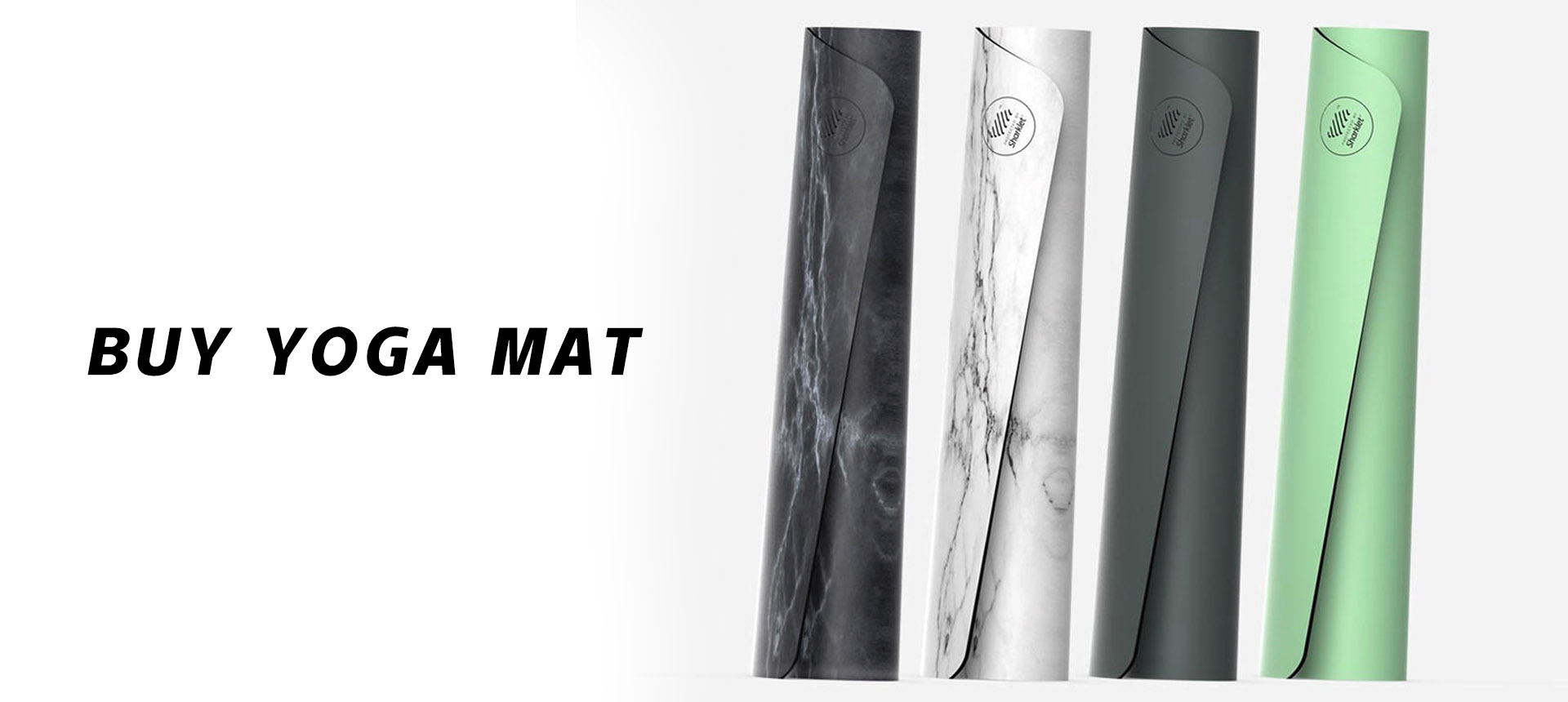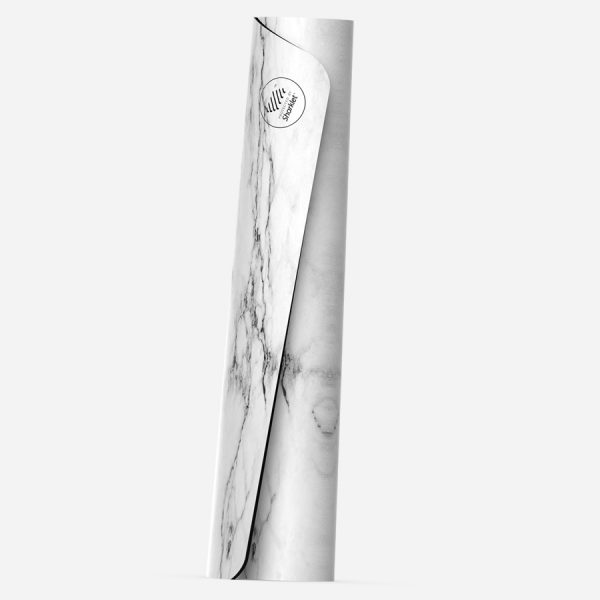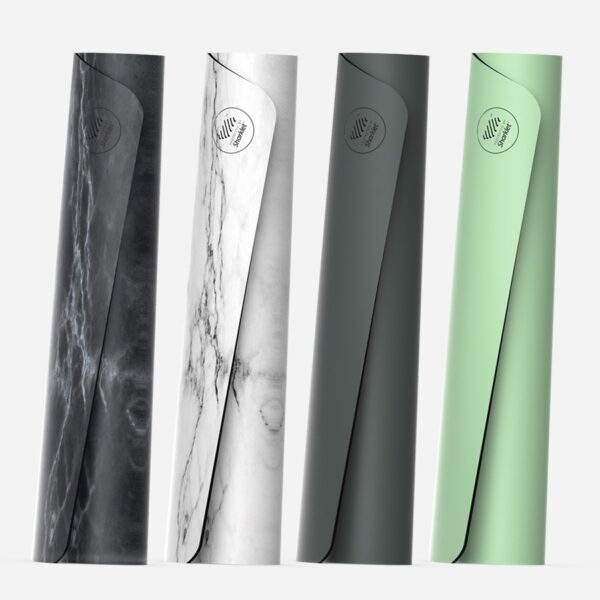
Your yoga mat will certainly be your faithful buddy on your yoga trip, so you need to pick sensibly. You may be wondering how specifically to choose the best yoga mat for your yoga practice and way of living, precisely because there are so many to select from.
Some yoga studios give you mats, yet to be honest: you don’t want other individuals’ sweat on you, right? Not to mention, yoga mats can get quite darn gross. So, having your own mat is important.
Here Are 8 Things to Consider When Choosing the most effective Yoga Mat For Your Practice
These eight necessary ideas will aid you in choosing a yoga mat.
1. Take the Thickness into consideration
A typical yoga mat is ordinarily ⅛ inch thick, which benefits many people.
If you’re slim as well as bony, nonetheless, the ⅛- inch mat may be too slim for you. When you’re in Floor Bow Present (Dhanurasana), as an example, your hip bones might harm as they press right into the floor. In this instance, you’ll require a thicker mat, such as the 1/4 inch thick.
The recommendations are comparable if you have delicate joints. When you’re in specific positions and you’re trying your best to focus on the breathing, the pressure on your elbows, ankles, or knees is unbearable. Obtain the 1/4 inch mat(e.g Manduka pro, famous for the thickness). It’s thicker, so it will certainly give even more support to your joints.
However, bear in mind that a thick yoga mat will make it hard for you to locate balance in standing postures, like Tree Pose. And also, the extra cushion will undoubtedly make the mat bulkier and also harder to bring around. So if you don’t have any problem with your joints, and you feel comfortable adequate resting on a conventional yoga exercise mat, after that there’s no need to go thicker mats.
2. Consider the Texture
Smooth mats can be fantastic if you select right. Several of them provide you with that “sticky” feel, and that’s essential to create grip and keep you from sliding about. If you want a smooth mat, it needs to be a good one! Otherwise, it will certainly come to be potentially hazardous as well as unsafe.
Smooth mats with terrific traction benefit Vinyasa and also Ashtanga yoga exercise requiring much more effective motion. It’s essential to prevent slip surface PVC mats because they are merely too slippery. I recommend the natural rubber mats. Particularly if you’re sweating a lot throughout the method, a smoother mat made of natural rubber will not absorb sweat like a textured surface mat.
Mats that have textured pattern naturally offer grasp, and for that reason, they are less slippery. You may opt for a cotton or hemp yoga exercise mat, yet rubber mats also feature good appearance. These mats are outstanding for more gentle kinds of yoga.
3. Where Will You Practice?
The location where you’re doing yoga exercise issues. If you exercise in your home, you don’t require fret about transporting a heavier mat. If you’re a newbie and practice Hatha or Yin yoga, you should certainly go with a thicker, bulkier mat because it will certainly be extra comfortable for you.
If you practice at a workshop, nonetheless, you’ll definitely require an extra lightweight mat. It should be light sufficient for you to carry around, and it ought to be long enough for your body in Savasana.
4. Make sure It’s Long Enough
When you exist down in Savasana, your mat should be long sufficient for your whole body. If your legs are longer than the mat, the distinction in temperature might make it challenging for you to loosen up. Standard yoga exercise mats are about 68 inches long. Make sure to get an extra-long yoga mat if you’re taller.
5. What Type of Yoga Are You Practicing?
You’ll be fine with an extra basic mat– it does not have to be of highest top quality if you’re exercising Hatha yoga exercise or Yin yoga. You’re not necessarily getting perspiring with these yoga poses, so the grip an ordinary mat supplies will be fine.
If you exercise Ashtanga, Vinyasa, or Hot Yoga, then you’ll require to buy a mat that will absorb your sweat as well as give super-strong traction to hands and feet. You can also consider adding a textured yoga towel to your mat’s top layer.
6. Focus on the Material
Many yoga mats, especially the low-cost ones, are made from PVC, not the most eco-friendly choice. PVC is not naturally degradable, which indicates the mat might last a bit much longer, yet it’s not an environmentally friendly mat material. You might consider hemp, recycled or natural rubber, and even organic cotton when looking into your new mat products.
Like Lululemon reversible mat, Jade yoga mat and Sharklet yoga mat are all of eco-friendly yoga mats. My favorite is Sharklet Yoga Mat, not only made latex-free, PVC-free but also easy to clean. Its surface could inhabit bacterial growth, also prevent odor thanks to closed-cell.
There are plenty of points to consider when selecting your brand-new yoga mat, but these factors to consider are a fantastic location to begin. Understanding your practice and your particular demands will route you to your best yoga exercise mat.
Happy practicing!



